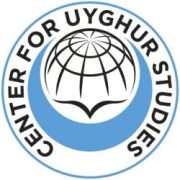The religion of the people living in any city can be understood from the places of worship in this city. Despite this widely accepted understanding, the PRC’s destruction of the visibility of places of worship is an indication that it cannot tolerate anything other than belief in the party. As a result of this intolerance, with the program of Sinification of Islam, the government demolished the minarets and domes of mosques and replaced them with the raised eaves with green tiles that are common in Chinese architecture. Thus, the architectural link with other Islamic countries was broken. The deletion of Arabic letters is also among the applications in this scope. A Chinese flag was hung on each mosque, and government propaganda was written on the walls of the mosques. In these writings in the mosques, the laws of the Chinese Communist regi- me on religion were praised, socialism was promoted, and the Chinese culture was praised. The verses and hadiths written in Arabic letters adorning the walls in all mosques in Islamic countries were seen as dangerous and erased by the Chinese Government. Instead, Xi’s words were embroidered on the walls. Libraries in mosques were revised, the Quran and other religious books were removed, books containing Xi and party propaganda were placed.
While the number of concentration camps and their area is increasing, historical mosques, cemeteries, and mausoleums are demolished. Details of how the historical and cultural heritage in the region has been destroyed are given in another report by ASPI, founder of the Xinjiang Data Project. This systematic destruction, reminiscent of the destruction during the Cultural Re- volution, when the mosques in East Turkistan were turned into pig stables, aims to leave no trace of Islam. In the demolition project that started in 2017, 16,500 mosques have been damaged so far. 8,500 of them were destroyed. In the historical region of East Turkistan, 5,931 mosques in Kashgar, 2,900 in Hotan, 2,540 in Aksu, and 1085 mosques in Ili were either damaged or destroyed. Together with other cities, the total figure is 16,500. In Hotan, where all of the mosques were demolished, ‘ a showpiece building in the city center was left untouched, and a limited number of people prayed here for the Friday prayer. In Kashgar, all mosques are closed.
A similar example of the red guards of the cultural revolution turning mosques into pig stables took place in Kashgar, and a mosque here was turned into a bar. The destruction was limited to mosques and targeted shrines that have an important place in Uyghurs’ lives. For example, Imam Asim’s mausoleum and outbuildings, where thousands of Uyghur Muslims come together every year with various events, have been severely damaged. What kind of destruction has been carried out is clearly evident when past satellite images are examined. In the newly captured satellite data, there are traces of trees there.
Copyright Center for Uyghur Studies - All Rights Reserved
